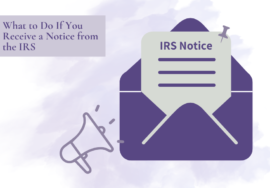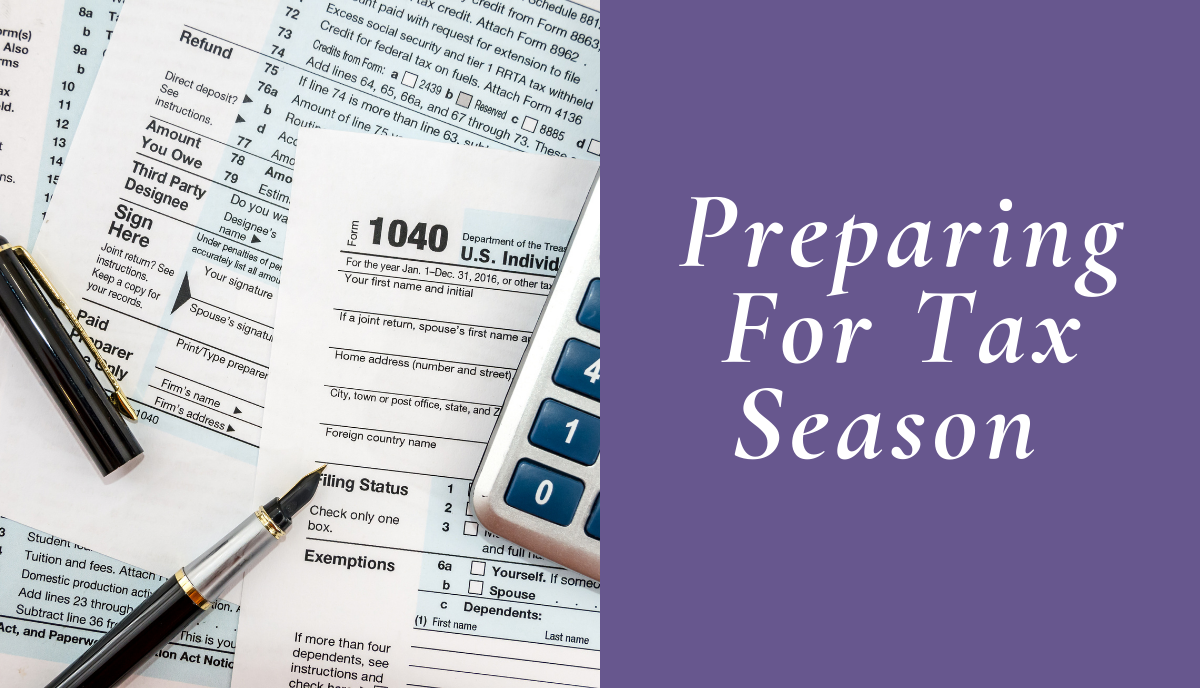
2023 Tax Changes to Look Out For
Adjustments to federal tax brackets, deductions, credits, and more are not new—they happen every year. This year’s changes are small and are largely related to inflation, but regardless it’s important to be informed about them so you can make any necessary adjustments for next year’s taxes. Let’s take a look at the 2023 tax changes you can expect to see. (Note: these adjustments will affect your 2023 taxes that you file in April 2024)
Standard Deduction
When you file your taxes, you have a choice between itemizing your deductions and taking the standard deduction (the majority of people choose to take the standard deduction). Standard deduction amounts for 2023 are:
- $27,700 for married couples filing jointly
- $20,800 for heads of household
- $13,850 for single taxpayers and married people filing separately
In addition, there is an extra deduction of $1,500 for taxpayers who are blind or are over 65 years of age (unless the person is unmarried and not a surviving spouse, in which case it is $1,850).
And for 2023 the standard deduction for children and others who can be claimed as a dependent on another taxpayer’s return is no more than the greater of $1,150 or $400 plus the person’s earned income (not to exceed the regular standard deduction).
Tax Rates and Brackets
Tax rates will remain the same this year, but tax brackets have shifted. Rates for all taxpayers are as follows:
- 37% for incomes over $578,126 ($693,751 for married couples filing jointly, $578,101 for HOH);
- 35% for incomes over $231,251 ($462,501 for married couples filing jointly, $231,251 for HOH);
- 32% for incomes over $182,101 ($364,201 for married couples filing jointly, $182,101 for HOH);
- 24% for incomes over $95,376 ($190,751 for married couples filing jointly, $95,351 for HOH);
- 22% for incomes over $44,726 ($89,451 for married couples filing jointly, $59,851 for HOH);
- 12% for incomes over $11,100 ($22,001 for married couples filing jointly, $15,701 for HOH).
- 10% for incomes of $11,000 or less ($22,000 for married couples filing jointly, $15,700 for HOH).
Capital Gains
Capital gains tax refers to the tax on profits from the sale of non-inventory assets, such as stocks, bonds, real estate, property, and so on. Like other tax rates, capital gains tax depends on the taxpayer’s income and filing status, but capital gains rates are lower than regular income tax rates. The capital gains rates for 2023 will be:
- 0% for incomes up to $44,625 ($89,250 for married filing jointly, $59,750 for HOH)
- 15% for incomes up to $492,300 ($553,850 for married filing jointly, $523,050 for HOH)
- 20% for incomes above $492,300 ($553,850 for married filing jointly, $523,050 for HOH)
Note: all income amounts refer to taxable income.
Tax Credits
Adjustments have been made to several individual tax credits for 2023. If any of the following apply to you, you’ll want to make note of these changes:
- Earned income credit (EIC)
The maximum credit for 3 or more children for 2023 will be $7,430. This credit begins to phase out at $17,640 (AGI, or earned income if higher), with no EIC for incomes of $63,698 or higher. Also, if a taxpayer’s investment income exceeds $11,000, they are not eligible for the EIC.
- Foreign earned income exclusion
This credit has been increased to $120,000 for the 2023 tax year.
Allowances: Fringe Benefits, FSAs, HSAs
Allowances for many employee fringe benefits have changed: qualified transportation and qualified parking benefits are at a monthly limit of $300; and the maximum salary reduction for health FSA contributions have increased to $3,050 for the year. Cafeteria plans that allow carryover of unused amounts will keep the maximum carryover amount of $550.
Contribution limits for health savings accounts (HSAs) have increased as well:
- Self-only coverage: annual deductible of no more than $3,850; those over the age of 55 can contribute an additional $1,000.
- Family coverage: annual deductible of no more than $7,750; those over the age of 55 can contribute an additional $1,000.
Estate Taxes
The gift and estate tax lifetime exclusion amount is key to determining how much wealth you can pass on to your family or another recipient without paying tax on it. This amount has risen to $12.92 million for 2023. The annual gift tax exclusion, which allows you to give up to a set amount to as many different recipients as you want, has increased to $17,000.
Retirement Plans
Contribution limits to retirement plans have changed. For 2023, the IRA contribution limits are $6,500 for those under age 50, and $7,500 for those age 50 or older. The phase-out income levels for IRA deductions have also been adjusted. Reminder: There are also contribution limitations based on income levels.
401(k) contribution limits are $22,500 for the employee, and an additional $7,500 for those 50 and older. There are no income limitations or phase-outs for 401(k) contributions.
Inflation Reduction Act of 2022 (IRA)
The Inflation Reduction Act (IRA) focuses on promoting clean energy initiatives as well as prescription drug pricing reform. Here are some of the key highlights that could affect your 2023 taxes:
- Affordable Care Act
The premium tax credit (refundable credit for coverage under a qualified health plan) has been extended through 2025 to taxpayers whose household income is greater than 400% of the poverty line.
- Clean Energy Provision
The energy-efficient home improvement credit has been extended through Dec. 31, 2032, while the residential energy-efficient property credit (now residential clean energy credit) is extended through Dec. 31, 2034. Property that qualified for the latter credit includes solar electric, solar hot water, fuel cell, small wind energy, geothermal heat pump and biomass fuel property. Qualified battery storage technology expenditures after Dec. 31, 2022 also now qualify.
- Clean Vehicle credits
The clean vehicle credit applies to vehicles purchased after Dec. 31, 2022 and expires after Dec. 31, 2032. Those who qualify for the credit could receive up to $4,000.
- Buying a new clean vehicle: Buyers must have a modified adjusted gross income (MAGI) $300,000 joint returns, $225,000 heads of household and $150,000 for single. A price cap has been established — the credit is not allowed for cars with a suggested retail price of over $55,000 or $80,000 for vans, SUVs.
- Buying a used clean vehicle: Buyers must have a modified adjusted gross income (MAGI) under $150,000 for joint returns, $112,500 for heads of household and $75,000 for single filers. Sales price of the vehicle must be $25,000 or less.
- IRS Funding
The act appropriates approximately $80 billion in funds for the IRS. Funds are directed to taxpayer services ($3 billion), enforcement ($46 billion), operations ($25 billion) and business systems modernization ($5 billion).
Secure 2.0 Act
This law is designed to substantially improve retirement savings options.
- Changing RMD age to 73 and eventually 75: The age to start taking RMDs increases to age 73 in 2023 and to 75 in 2033. The penalty for failing to take an RMD will decrease from 50% to 25% of the RMD amount, and 10% if corrected in a timely manner for IRAs.
- Auto-enroll in 401k plans: Beginning in 2025, Secure 2.0 will require companies with new 401(k) and 403(b) plans to automatically enroll their employees into these plans at minimum contribution rates of 3% to 10%. The rate will increase 1% each year up to 15%.
Wood CPA Can Help With 2023 Tax Changes and More
Taxes can be complicated, but Wood CPA is here to help! We provide tax planning and tax preparation services for federal and state taxes for individuals, corporations, partnerships, trusts, estates and nonprofits.
If you are in need of a tax accountant or have questions about any tax-related concern, schedule a meeting with us here.








